Artan Salihu
Technische Universität Wien, Christian Doppler Laboratory
Modeling RIS from Electromagnetic Principles to Communication Systems--Part II: System-Level Simulation, Ray Tracing, and Measurement
Mar 20, 2024Abstract:In this paper, we systematically study the electromagnetic (EM) and communication aspects of an RIS through EM simulations, system-level and ray-tracing simulations, and finally measurements. We simulate a nearly perfect, lossless RIS, and a realistic lossy anomalous reflector (AR) in different ray tracers and analyze the large-scale fading of simple RIS-assisted links. We also compare the results with continuous and quantized unit cell reflection phases with one to four-bit resolutions. Finally, we perform over-the-air communication link measurements in an indoor setting with a manufactured sample of a wide-angle AR. The EM, system-level, and ray-tracing simulation results show good agreement with the measurement results. It is proved that the introduced macroscopic model of RIS from the EM aspects is consistent with our proposed communication models, both for an ideal RIS and a realistic AR.
Self-Supervised and Invariant Representations for Wireless Localization
Feb 14, 2023Abstract:In this work, we present a wireless localization method that operates on self-supervised and unlabeled channel estimates. Our self-supervising method learns general-purpose channel features robust to fading and system impairments. Learned representations are easily transferable to new environments and ready to use for other wireless downstream tasks. To the best of our knowledge, the proposed method is the first joint-embedding self-supervised approach to forsake the dependency on contrastive channel estimates. Our approach outperforms fully-supervised techniques in small data regimes under fine-tuning and, in some cases, linear evaluation. We assess the performance in centralized and distributed massive MIMO systems for multiple datasets. Moreover, our method works indoors and outdoors without additional assumptions or design changes.
Attention Aided CSI Wireless Localization
Mar 20, 2022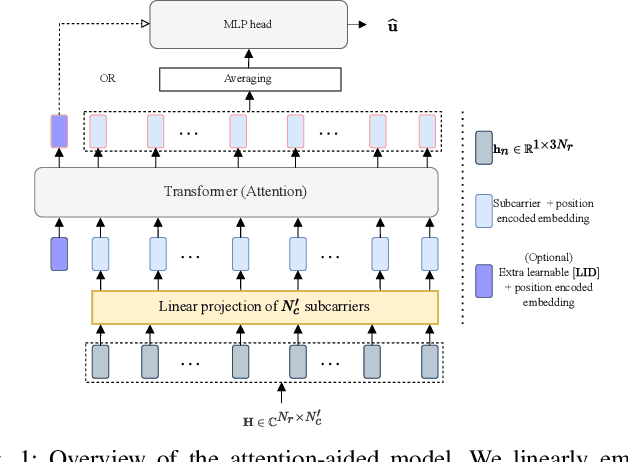
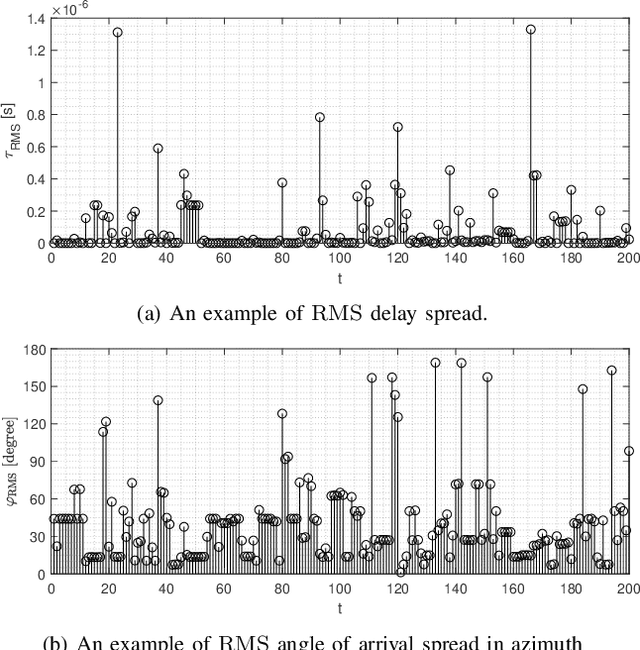


Abstract:Deep neural networks (DNNs) have become a popular approach for wireless localization based on channel state information (CSI). A common practice is to use the raw CSI in the input and allow the network to learn relevant channel representations for mapping to location information. However, various works show that raw CSI can be very sensitive to system impairments and small changes in the environment. On the contrary, hand-designing features may hinder the limits of channel representation learning of the DNN. In this work, we propose attention-based CSI for robust feature learning. We evaluate the performance of attended features in centralized and distributed massive MIMO systems for ray-tracing channels in two non-stationary railway track environments. By comparison to a base DNN, our approach provides exceptional performance.
Learning-based Remote Radio Head Selection and Localization in Distributed Antenna System
Nov 07, 2021

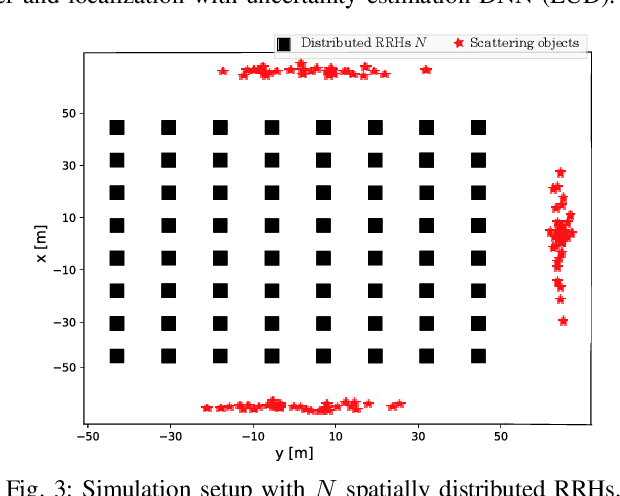
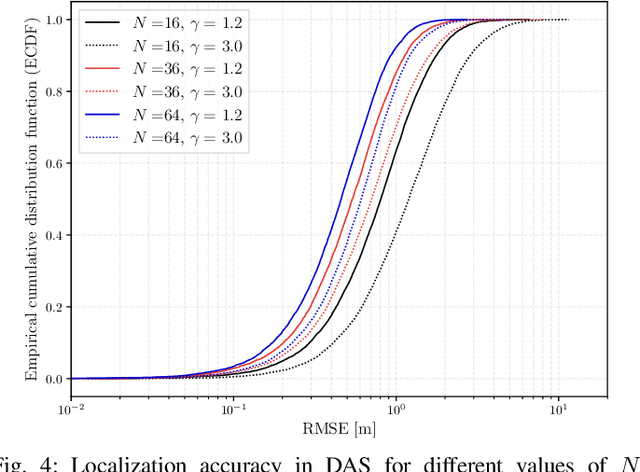
Abstract:In this work, we consider estimating user positions in a spatially distributed antenna system (DAS) from the uplink channel state information (CSI). However, with the increased number of remote radio heads (RRHs), collecting CSI at a central unit (CU) can significantly increase the fronthaul overhead and computational complexity of the CU. This problem can be mitigated by selecting a subset of RRHs. Thus, we present a deep learning-based approach to select a subset of RRHs for wireless localization. We employ an RRH selection layer that is jointly trained with the rest of the network and learn the model parameters as well as the set of selected RRHs. We show that the selection strategy comes at a relatively small cost of localization performance. Nonetheless, by comparison to a trivial approach based on the maximization of the channel gain, we show that the proposed method leads to significant performance gains in a propagation environment dominated by non-line-of-sight.
Towards Scalable Uncertainty Aware DNN-based Wireless Localisation
Jun 08, 2021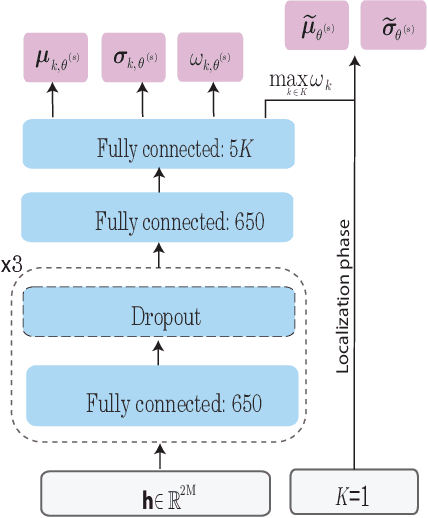

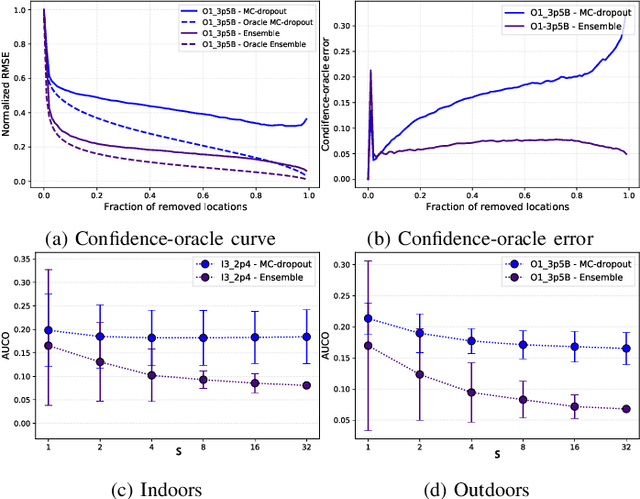
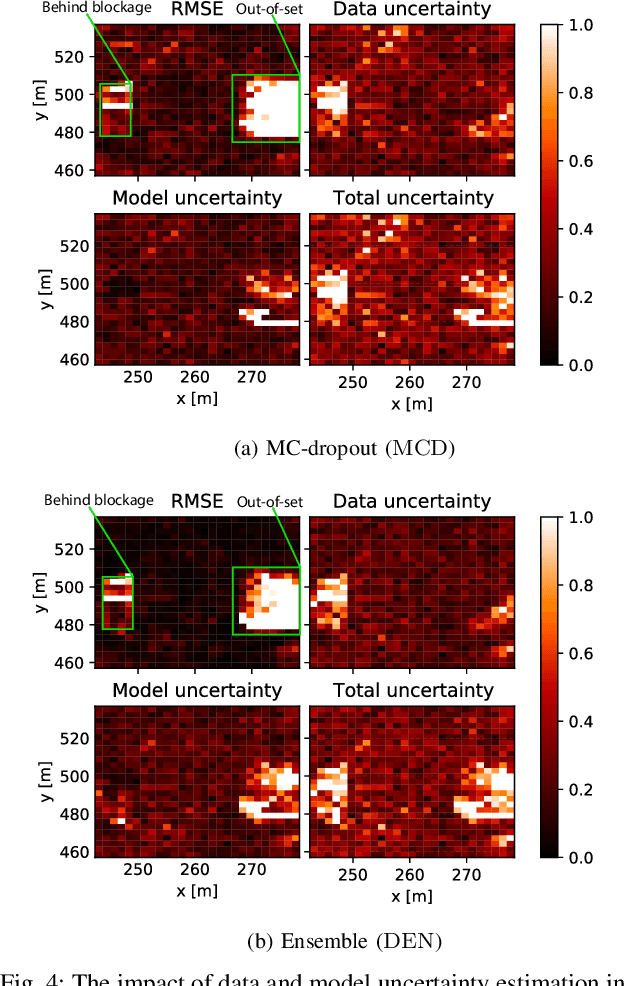
Abstract:Existing deep neural network (DNN) based wireless localization approaches typically do not capture uncertainty inherent in their estimates. In this work, we propose and evaluate variational and scalable DNN approaches to measure the uncertainty as a result of changing propagation conditions and the finite number of training samples. Furthermore, we show that data uncertainty is sufficient to capture the uncertainty due to non-line-of-sight (NLOS) and, model uncertainty improves the overall reliability. To assess the robustness due to channel conditions and out-of-set regions, we evaluate the methods on challenging massive multiple-input multiple-output (MIMO) scenarios.
 Add to Chrome
Add to Chrome Add to Firefox
Add to Firefox Add to Edge
Add to Edge